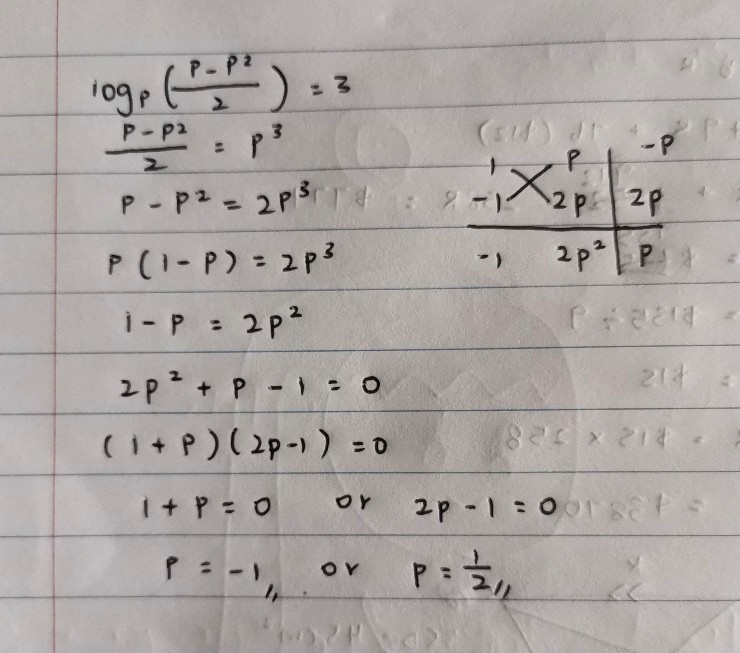Felicia's answer to Ming's Secondary 3 A Maths Singapore question.
done
{{ upvoteCount }} Upvotes
clear
{{ downvoteCount * -1 }} Downvotes
hope it helps
Date Posted:
2 years ago
when solving equations such as p(1-p) = 2p^3,
should not divide by unknown quantities such as p, because it may result in "missing" solutions.
the proper way to solve such equations should be to move all terms to one side and then factorize, so this gives ...
p(p+1)(2p-1) = 0
with solutions p = -1, 0 or 1/2
thereafter, have to substitute each solution back into the original equation to verify that original equation is satisfied.
by definition, "log base a of b" is possible only when both a and b are positive, therefore solutions p =-1 and p = 0 both have to be rejected.
therefore, final answer is p = 1/2 only.
should not divide by unknown quantities such as p, because it may result in "missing" solutions.
the proper way to solve such equations should be to move all terms to one side and then factorize, so this gives ...
p(p+1)(2p-1) = 0
with solutions p = -1, 0 or 1/2
thereafter, have to substitute each solution back into the original equation to verify that original equation is satisfied.
by definition, "log base a of b" is possible only when both a and b are positive, therefore solutions p =-1 and p = 0 both have to be rejected.
therefore, final answer is p = 1/2 only.



